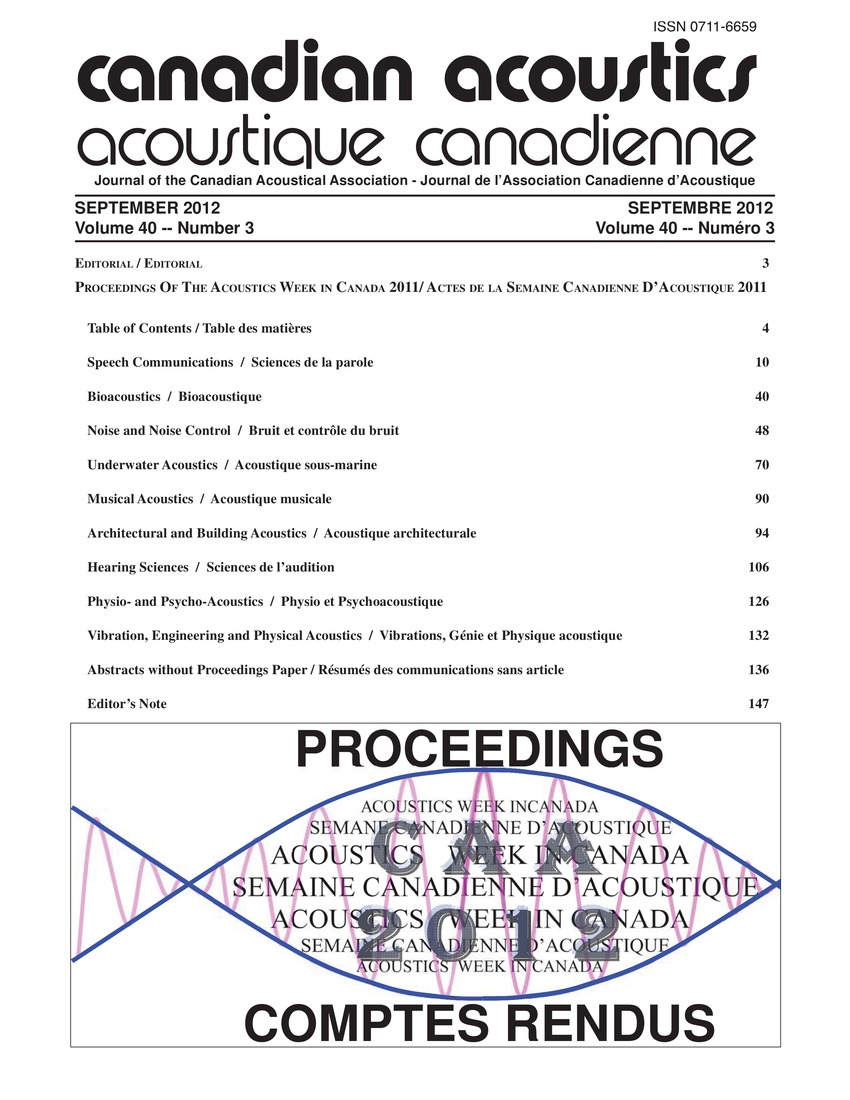Preliminary statistical pattern recognition methods in the study of vowels produced by children with and without speech sound disorders
Keywords:
Pattern recognition, Speech, Age groups, Canadian english, Error patterns, Movement pattern, Single-point measurement, Speech sounds, Statistical pattern recognition, Vowel acquisition, Young childrenAbstract
The nature of vowel acquisition and vowel error patterns in young children, especially those with speech sound disorders (SSD), is not well understood. Previous studies of vowels produced by children with SSD of unknown origin (SSD-TJNK) have shown that they demonstrate a similar order of acquisition and vowel error patterns as those of children with TDS (typically developing speech), but are slower in developing vowels and produce more vowel errors. Adult participants were 15 women, ages 18 to 35 years. All were monolingual speakers of Western Canadian English with no history of speech delay or disorder. Two groups of children participated (TDS and SSD-UNK), with three children in each of four age groups in each group for a total of 24 children. Vowels of all groups were more successfully classified with two measurements representing the formant movement patterns, than a single point measurement, and a combination of all acoustic measures than a single or a subset of measures.Additional Files
Published
How to Cite
Issue
Section
License
Author Licensing Addendum
This Licensing Addendum ("Addendum") is entered into between the undersigned Author(s) and Canadian Acoustics journal published by the Canadian Acoustical Association (hereinafter referred to as the "Publisher"). The Author(s) and the Publisher agree as follows:
-
Retained Rights: The Author(s) retain(s) the following rights:
- The right to reproduce, distribute, and publicly display the Work on the Author's personal website or the website of the Author's institution.
- The right to use the Work in the Author's teaching activities and presentations.
- The right to include the Work in a compilation for the Author's personal use, not for sale.
-
Grant of License: The Author(s) grant(s) to the Publisher a worldwide exclusive license to publish, reproduce, distribute, and display the Work in Canadian Acoustics and any other formats and media deemed appropriate by the Publisher.
-
Attribution: The Publisher agrees to include proper attribution to the Author(s) in all publications and reproductions of the Work.
-
No Conflict: This Addendum is intended to be in harmony with, and not in conflict with, the terms and conditions of the original agreement entered into between the Author(s) and the Publisher.
-
Copyright Clause: Copyright on articles is held by the Author(s). The corresponding Author has the right to grant on behalf of all Authors and does grant on behalf of all Authors, a worldwide exclusive license to the Publisher and its licensees in perpetuity, in all forms, formats, and media (whether known now or created in the future), including but not limited to the rights to publish, reproduce, distribute, display, store, translate, create adaptations, reprints, include within collections, and create summaries, extracts, and/or abstracts of the Contribution.


